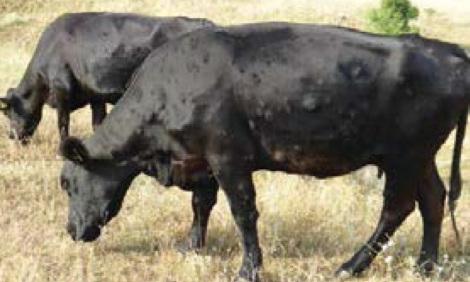



What Did the Australian Beef Market Do in 2013?
Winter price action was steady and eastern states reported a 17 per cent higher slaughter throughput than in 2012, write Meat and Livestock Australia analysts in their seasonal summary.During 2013, the winter period saw varying rainfall conditions across the country, with ‘below average’ falls recorded throughout much of Queensland, coupled with ‘above average’ minimum temperatures. The scarcity of rain across many northern cattle supply regions placed further pressure on producers heading into an anticipated poor spring season, with prices lower compared to winter 2012. In contrast, parts of south-west WA and much of south-east Australia had ‘above average’ falls, assisting ideal pasture growing conditions for producers.
Throughput
Total national cattle yardings throughout winter were 3 per cent higher compared with the corresponding period last year and 4 per cent on the five-year average, totalling 637,333 head, underpinned by producers offloading a greater proportion of young cattle due to the deteriorating season. Consignments across Queensland and Victoria contributed mostly to the gains, up 9 per cent and 7 per cent , compared to the same period last year, and while the majority of states yarded fewer numbers, overall totals increased.
Prices
The commencement of winter saw national prices increase steadily across all categories, as cattle supplies began to tighten leading into the colder months. Average prices trended dearer towards the end of August before easing into spring, as the chance of ‘above average’ rain was unlikely, along with restockers becoming less active.
At the start of June, the Eastern Young Cattle Indicator (EYCI) averaged 299.75¢/kg cwt and reached its highest level for winter 2013 in the first week of July, at 330.50¢/kg cwt. Demand for cattle lines suitable to restock increased throughout the three-month period, as producers were hopeful of some decent winter falls, particularly across much of NSW, however, Victoria and Tasmania saw most of the rain. As a result, the quality of cattle across much of northern NSW and Queensland mainly consisted of plainer conditioned lines, with a higher proportion of lightweight cattle coming forward.
Medium and heavy steers also met with increasing demand from feeders and processors for the June-to-August period, averaging 168¢/kg lwt and 179¢/kg lwt, respectively, across the country. However, prices were down 6 per cent and 5 per cent , respectively, year-on-year, with a higher percentage of cattle offloaded, as feed levels reflected a drier than usual season conditions leading into spring. Similarly, feeder steer and cow prices averaged 12 per cent and 9 per cent lower, respectively, compared with a year ago, yet demand assisted prices by the end of August.
Slaughter and direct-to-works
Eastern states weekly slaughter throughout winter averaged 149,476 head per week, 17 per cent higher than the corresponding period in 2012, as a result of the poor seasonal conditions, giving producers little option other than to offload.
Consequently, over-the-hooks rates across the eastern states eased in comparison to year-ago levels, with yearling steers (260-280kg cwt) down 4 per cent , to average 311¢/kg cwt, attributed to subdued restocker interest. Prices for grown steers (295¢/kg cwt) and cows (244¢/kg cwt) also averaged lower for the three months, down 6 per cent and 9 per cent , respectively, over the same period, underpinned by heightened supplies direct-to-works.
Feeders
Throughout winter, domestic feeder rates rose steadily following autumn, with indicative prices reaching their highest for the year at the end of August. Domestic feeder steers (280-350kg) started June at 179¢/kg lwt, to average 185¢/kg lwt for the three months, down 12 per cent compared with year-ago levels. Similarly, domestic feeder heifers (280-350kg) commenced June at 163¢/kg lwt, to average 166¢/kg lwt across the eastern states, down 16 per cent over the same period, with subdued demand from lotfeeders in comparison to last year.


